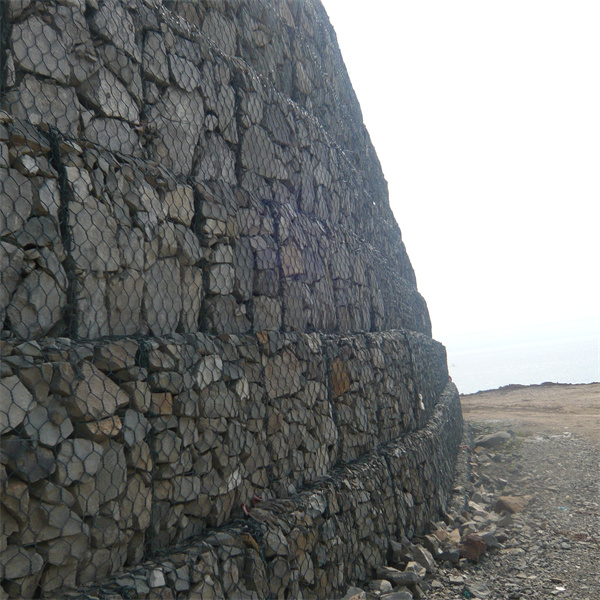Dec . 15, 2024 23:44 Back to list
gabion channel
The Role of Gabion Channels in Erosion Control and Water Management
Gabion channels have emerged as an essential solution in the fields of civil engineering and environmental management. These structures, made of rock-filled wire mesh cages, are increasingly used for erosion control, flood management, and habitat restoration. Their effectiveness and adaptability make them invaluable in various landscapes, particularly in areas susceptible to soil erosion and water runoff.
What are Gabion Channels?
Gabion channels are essentially artificial channels lined with gabions—cages or boxes filled with rocks, stones, or concrete debris. These channels are designed to guide the flow of water while providing structural integrity to riverbanks, slopes, and other vulnerable landscapes. The primary function of gabion channels is to decrease the velocity of water flow, which helps in sediment deposition and reduces the potential for erosion.
Erosion Control
Erosion poses a significant threat to land stability, especially in areas with steep topography or loose soil. Traditional methods of erosion control, such as concrete barriers and riprap, can often be expensive and less environmentally friendly. In contrast, gabion channels provide a more sustainable solution. The porous nature of the gabions allows for water to flow through gradually, which minimizes turbulence and the potential for soil washout.
Moreover, as sediment is deposited within the gabion structure, it can gradually contribute to the stabilization of the surrounding environment. This sedimentation process encourages the growth of vegetation, which further aids in soil retention and enhances the ecosystem’s biodiversity.
Flood Management
gabion channel

In addition to controlling erosion, gabion channels play a crucial role in managing flood risks. With increasing instances of extreme weather events, the importance of effective flood management strategies cannot be understated. Gabion structures can efficiently absorb and redirect excess water, reducing the likelihood of flooding in surrounding areas.
When integrated into urban landscapes, gabion channels can help manage stormwater runoff effectively. By slowing down water flow and allowing it to spread across a broader area, they help to decrease pressure on drainage systems and mitigate the risk of urban flooding. Additionally, the natural materials used in gabion construction blend well into the environment, maintaining the aesthetic appeal of the landscape while providing practical benefits.
Habitat Restoration
Gabion channels are also valuable for habitat restoration projects. The natural materials and structure of gabions create a suitable environment for various aquatic and terrestrial species. By providing shelter and promoting vegetation growth, these channels can enhance biodiversity and support the regeneration of native ecosystems.
In many cases, gabion channels have been utilized in river restoration projects, where they help to re-establish natural riverbanks and improve water quality. The combination of erosion control, water management, and habitat creation makes gabion channels a holistic approach to environmental conservation.
Conclusion
Gabion channels offer a multifaceted solution to some of today's most pressing environmental challenges. Their ability to control erosion, manage flood risks, and restore habitats makes them a crucial tool for engineers and environmentalists alike. As awareness of sustainable practices continues to grow, the utilization of gabion channels is expected to increase, paving the way for more resilient landscapes that can withstand the impacts of climate change and human activity. Embracing such natural engineering solutions is essential for fostering a harmonious relationship between development and the environment.
-
HESCO Gabion Baskets for Coastal Erosion Prevention
NewsAug.22,2025
-
Longevity and Durability of River Rock Gabion Walls
NewsAug.22,2025
-
How to Integrate Gabion 3D Walls in Urban Planning
NewsAug.22,2025
-
Reno Mattress Gabion Applications in Civil Engineering
NewsAug.22,2025
-
How to Install Wire Mesh for Gabion Baskets Properly
NewsAug.22,2025
-
Best Materials for Filling a Chain Link Gabion
NewsAug.22,2025
-
Wire Mesh Thickness Impact on Gabion Wall Load Bearing
NewsAug.12,2025






